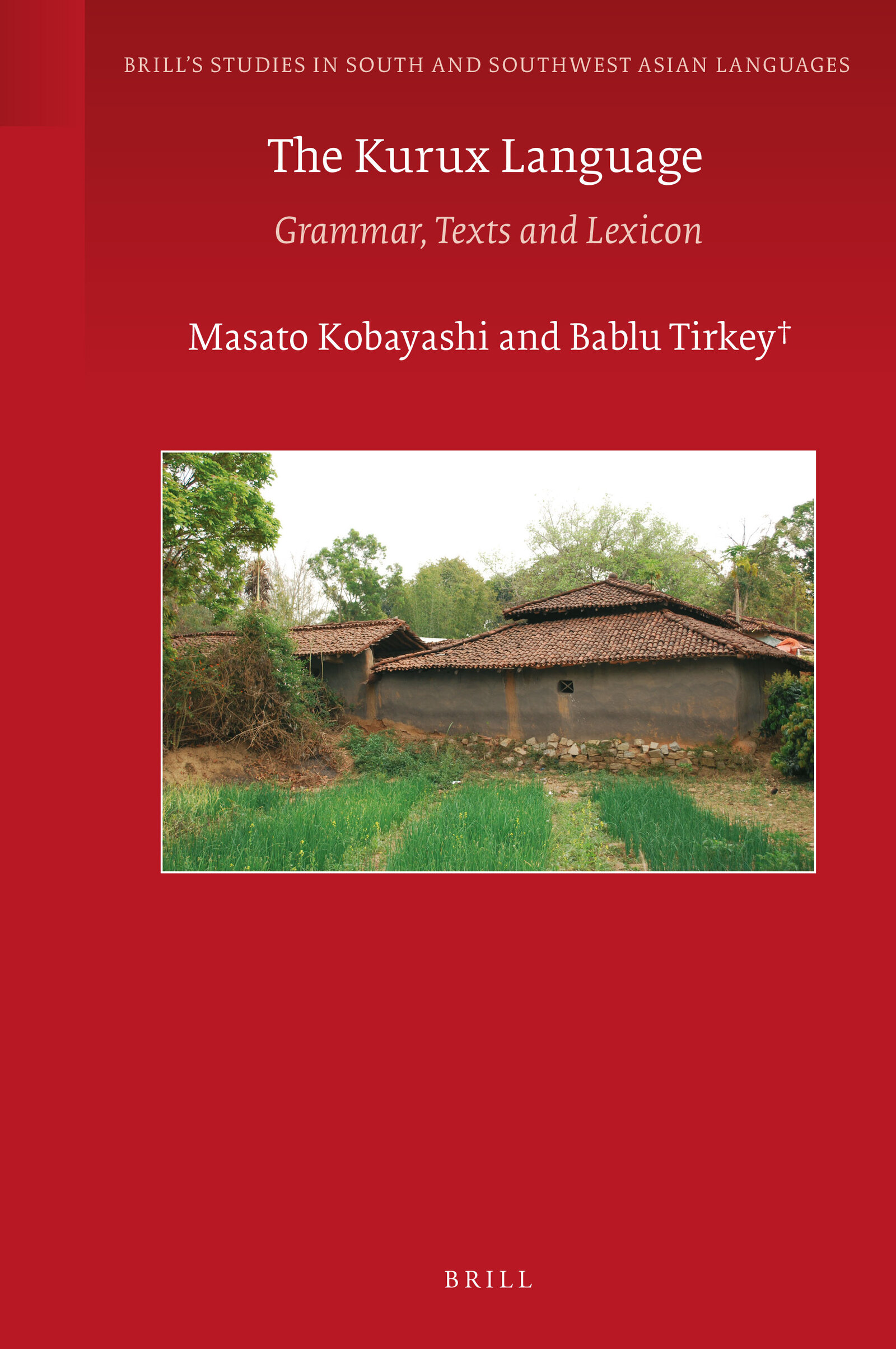
Title
Brill's Studies in South and Southwest Asian Languages, Volume: 8 The Kurux Language Grammar, Texts and Lexicon
Size
791 pages, hardcover
Language
English
Released
September 21, 2017
ISBN
978-90-04-34765-6
Published by
Brill
Book Info
See Book Availability at Library
Misc.
English, Kurux
Japanese Page
Maybe you have heard from your language teachers that you can understand different cultures and broaden your worldview by learning foreign languages. Normally, you learn a foreign language from grammars and dictionaries, and it is the job of us linguists to write them. But since the primary concern of linguists is the structure of the language in question, grammars and dictionaries written by linguists often tell little about culture. In this grammar, we tried to cite sentences Kurux (also known as Kurukh or Oraon) speakers actually used in their spontaneous narratives, and make it a useful resource for learning Kurux culture as well as grammar.
In 2004, when I wanted to start my first linguistic fieldwork on Dravidian tribal languages, I was introduced to Bablu Tirkey, then a graduate student at a university I was visiting. Bablu was from a heartland Kurux village where people speak only Kurux. He was not just an enthusiastic collaborator, but also a genius teacher. He taught me Kurux all day for two weeks, until I could make myself understood in Kurux. I am a historical linguist and my primary interest is to reconstruct the proto-language from which Dravidian languages such as Tamil and Kurux diverged. Most Dravidian languages, including Kurux, have no written tradition, and we need to collect data for historical reconstruction from fieldwork. Bablu and I studied two Dravidian tribal languages, Kurux and Malto, for ten years, until Bablu suddenly fell ill and passed away in 2015. When I almost gave up continuing my work on Kurux, Bablu’s junior students wrote me and offered help. Using our field notes, I wrote this book as a joint publication with Bablu. Since we had made a narrative corpus of transcribed audio recordings, I gave thirteen glossed bilingual transcripts in the Text section, and extracted examples in the Grammar section from the corpus. The Lexicon part contains 13,000 Kurux words from various sources.
While most Dravidian languages are spoken in South India, Kurux speakers live in the plateaus in Eastern India, isolated from the other Dravidian languages. Judging from early Indo-Aryan loanwords in the Kurux lexicon, Kurux speakers migrated from South India through the Indo-Gangetic Plains. The Kurux still migrate for farming, and there is now a sizable Kurux population in the tea-growing region in Northeastern India. While Kurux has no honorific speech, it is full of sophisticated roundabout expressions. For example, you might have visitors who talk about the nice ripe gourd over your roof, but they are actually talking about the marriage of your daughter. The Kurux also have their own myths and religion, and you can learn about the Kurux way of thinking by reading the Text part of this book.
At first sight, Kurux appears to be heavily influenced by Indo-Aryan languages and to have lost most of the original Dravidian features. However, a closer look reveals that Kurux actually preserves archaic features many other Dravidian languages have lost, such as the person-number-gender concord of nominal predicates. Based on the findings I made in this book, I am now trying to trace the changes between Proto-Dravidian and Kurux, and reconsider the position of Kurux in the family tree of Dravidian.
(Written by KOBAYASHI Masato, Professor, Graduate School of Humanities and Sociology / 2020)
Table of Contents
(General information about the Kurux language - KOBAYASHI Masato)
Grammar
(Descriptive grammar of Kurux - KOBAYASHI Masato)
2. Phonology
(KOBAYASHI Masato)
3. Morphology
(KOBAYASHI Masato)
4. Syntax and Pragmatics
(KOBAYASHI Masato)
5. Semantics
(KOBAYASHI Masato)
6. Lexicon
(KOBAYASHI Masato)
Texts
7. Glossed Texts
(Thirteen transcribed recordings, with interlinear glosses and translation - KOBAYASHI Masato and Bablu TIRKEY)
Lexicon
(A Kurux-English Dictionary with 13,000 words - Bablu TIRKEY)
Related Info
P. Sreekumar, Masato Kobayashi and Bablu Tirkey: The Kurux Language: Grammar, Text and Lexicon. Bulletin of the School of Oriental and African Studies 82:3 (2019), pp.563-565



 Find a book
Find a book


 eBook
eBook